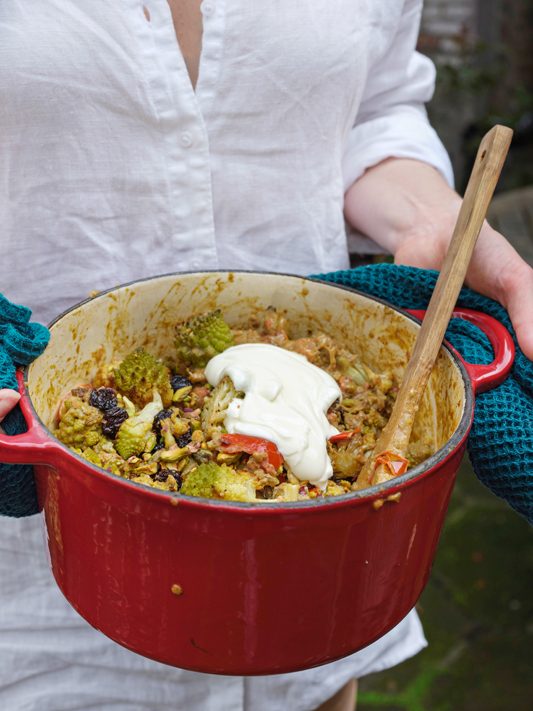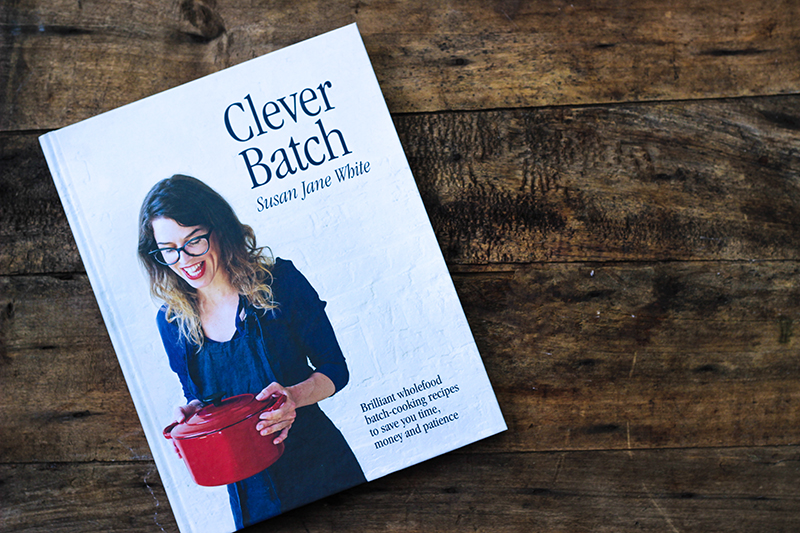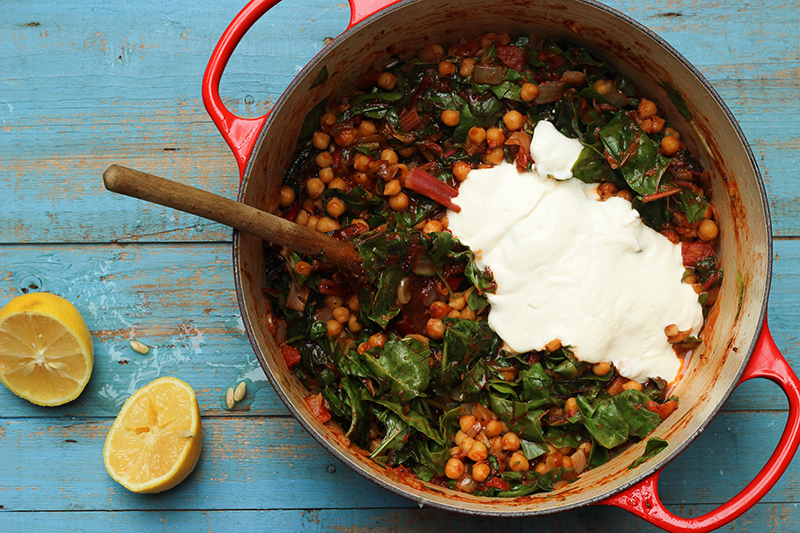This vegetarian korma is immensely satisfying. Don’t get me wrong, I enjoy meat. But I find myself wondering whether future generations will look back and yack at the idea of supermarkets selling solid lumps of animal flesh. If you arrived on Earth today and saw how we dismembered other living creatures, then sold them in plastic trays, you’d think that we were greasy psychopaths.
But for now, the mass manufacturing of meat limbs seems perfectly acceptable. Strange, eh? (Come to think of it, we’d probably find our obsession with Wow Brows and golf equally disquieting.)
If society’s relationship with factory meat seems disturbing, could we start buying less of it? Give sales a massive wedgie? I’d love to see footfall directed back into our butchers, where it mindfully and respectfully belongs. We’d also be doing our wallet, our health and our environment a whopping great service. Look, I’m pretty caffeinated right now, and this roasted cauli korma is making me disproportionately happy. Try it.

Serves 6
1 head of cauliflower
1 small head of Romanesco cauliflower (or another head of the regular variety if this is tricky to find)
4 tablespoons coconut oil or ghee
3 onions, diced
8 garlic cloves, diced
1 large finger-sized piece of fresh ginger, peeled and grated
25g Indian korma dried spice mix
6 ripe cooking tomatoes (e.g. Roma), chopped
1 x 400ml tin of full-fat coconut milk
1 large cup of Greek yogurt
2 tablespoons maple syrup
Handful of raisins, to serve
Smashed pistachios, to serve
Wedges of lime, to serve
Fire up your oven to 220°C.
Prep your cauli pieces by removing the outer leaves from both heads of cauliflower and carefully slicing the arse off their stems. Compost these (they don’t make good stock – too much sulphur). Break your cauliflower into good-sized florets – not too small, but not too monstrous either. The Romanesco variety will need more stem trimming, but you can add these pieces onto your baking tray too. They taste just as good.
Jumble your florets onto two baking trays (or one large tray) with a lick of coconut oil or ghee and roast on high for 16–20 minutes, shaking halfway through to prevent them from sticking to the tray. You’re looking for a lightly charred, golden floret that still holds its shape and bite.
While the cauli cooks, get going on your korma. Using your biggest casserole or stockpot, sweat your onions with 2 tablespoons of your preferred choice of fat for 5 minutes before adding the garlic, ginger and korma spices. Stir until the garlic starts to colour.
Now add the fresh tomatoes, coconut milk, yogurt and maple syrup. Gently putter on a low heat for 15 minutes, until the cauli florets are ready – at which point, simply rocket in the roasted cauli and cook for another 5–10 minutes.
If you have time, heat a frying pan with the remaining 1-2 tablespoons of coconut oil or ghee and add a handful of raisins. Stir until they turn chewy on the outside and are swollen on the inside. Sprinkle on top of your korma alongside some smashed pistachios and wedges of lime. Serve with brown basmati rice or steamed baby potatoes.






6 Comments
Amazeballs recipe. Never too keen on cauliflower, but as the hubs says… ‘keep her’… or perhaps ‘keeper’! 🙂
Charred cauli is fabu! Could chuck the steamed or boiled stuff though (yeuck)
I made this yesterday and it is delicious! although I cheated and added a jar of korma sauce to stretch it
Whatever works for you! Great!
Can you please unpack the korma spice mix for those of us who cook fully from scratch? (In other words, which spices do you recommend in lieu of the korma spice mix.)
You could use sweet paprika, turmeric and ground cumin, and it would taste fab! I’m forever mixing up the ratio of spices in my kitchen and no two curries ever taste the same. So use whatever you have, and maybe you’ll discover the best curry you’ve ever tasted ! Stay well . Namaste